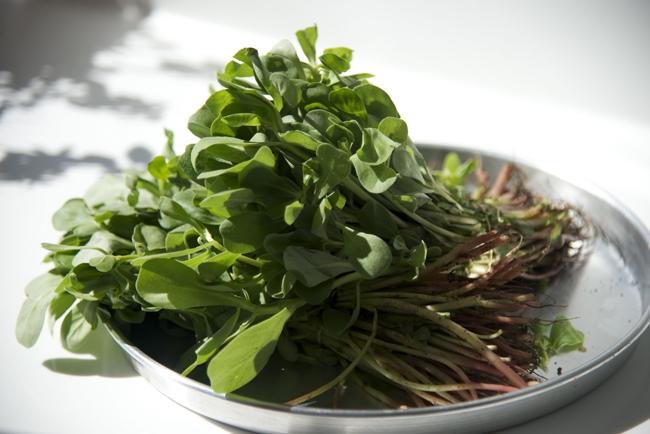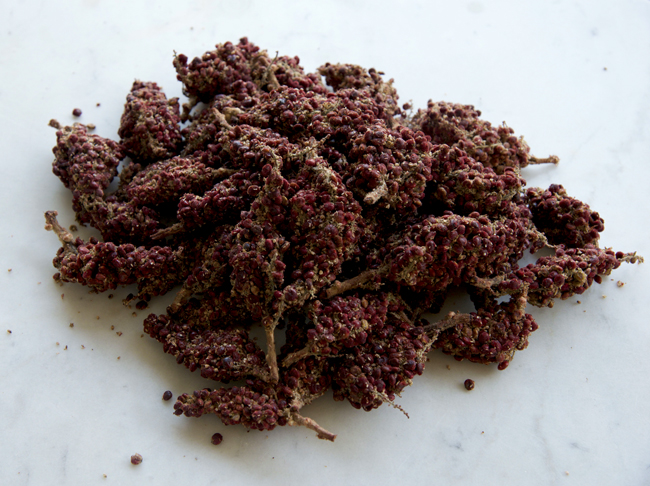13 Oct
 Until I started researching Mediterranean Street Food, I only knew fatayer (Lebanese triangular savoury pastries) as dainty little triangles, made at home by my mother and grandmother who were uncanny in how perfectly they shaped them and how well they sealed them so that none of the juice from the filling trickled out to spoil the look of the golden triangles. I also ate fatayer in restaurants of course. They were a little less dainty and a little less sour and with more crust than filling. But somehow I had never had them from a bakery. Perhaps because my mother sent out toppings for manaqish to the bakery for the baker to make our manaqish but she always made the fatayer at home. Things change naturally and my mother is no longer so young and now has her fatayer made by Emile, our local baker whose dough is just amazing. Of course, his fatayer are not dainty — unless it is a special order bakers make large fatayer for people to have as a snack or as a quick lunch on the go — but they are just as good as my mother’s and when I saw the fresh baqleh (purslane) at the greengrocer, I bought some and asked my mother to make the filling to take to Emile for him to make the fatayer.
Until I started researching Mediterranean Street Food, I only knew fatayer (Lebanese triangular savoury pastries) as dainty little triangles, made at home by my mother and grandmother who were uncanny in how perfectly they shaped them and how well they sealed them so that none of the juice from the filling trickled out to spoil the look of the golden triangles. I also ate fatayer in restaurants of course. They were a little less dainty and a little less sour and with more crust than filling. But somehow I had never had them from a bakery. Perhaps because my mother sent out toppings for manaqish to the bakery for the baker to make our manaqish but she always made the fatayer at home. Things change naturally and my mother is no longer so young and now has her fatayer made by Emile, our local baker whose dough is just amazing. Of course, his fatayer are not dainty — unless it is a special order bakers make large fatayer for people to have as a snack or as a quick lunch on the go — but they are just as good as my mother’s and when I saw the fresh baqleh (purslane) at the greengrocer, I bought some and asked my mother to make the filling to take to Emile for him to make the fatayer.
11 Oct
 When I wrote my Lebanese cookbook more than 20 years ago, sumac was still a relatively unknown ingredient, unlike now when almost everyone knows what it is, and more to the point can find it fairly easily. Anyhow, my mother told me all about how it is picked and dried, and then ground and I put all the information in the book together with how if you picked it from the wrong plant, you could die. Thank goodness for my mother being the fount of knowledge on all things culinary in Lebanon because I had never seen sumac either on the plant, or being dried and until recently, I only knew it in its ground form. But one day, a few years back, I was walking through souk el-Attarine in Aleppo and I found stalls selling sumac on the branch (‘ala al-‘anqoud as it is described in Arabic) and whole berries after they have been rubbed off the branch; and one guy was selling it ground with the seed and ground without — I honestly could not tell the difference. And two years ago, I found it being sold on the branch driving through the south of Lebanon . However, it is only two days ago, that I finally saw the whole process.
When I wrote my Lebanese cookbook more than 20 years ago, sumac was still a relatively unknown ingredient, unlike now when almost everyone knows what it is, and more to the point can find it fairly easily. Anyhow, my mother told me all about how it is picked and dried, and then ground and I put all the information in the book together with how if you picked it from the wrong plant, you could die. Thank goodness for my mother being the fount of knowledge on all things culinary in Lebanon because I had never seen sumac either on the plant, or being dried and until recently, I only knew it in its ground form. But one day, a few years back, I was walking through souk el-Attarine in Aleppo and I found stalls selling sumac on the branch (‘ala al-‘anqoud as it is described in Arabic) and whole berries after they have been rubbed off the branch; and one guy was selling it ground with the seed and ground without — I honestly could not tell the difference. And two years ago, I found it being sold on the branch driving through the south of Lebanon . However, it is only two days ago, that I finally saw the whole process.
